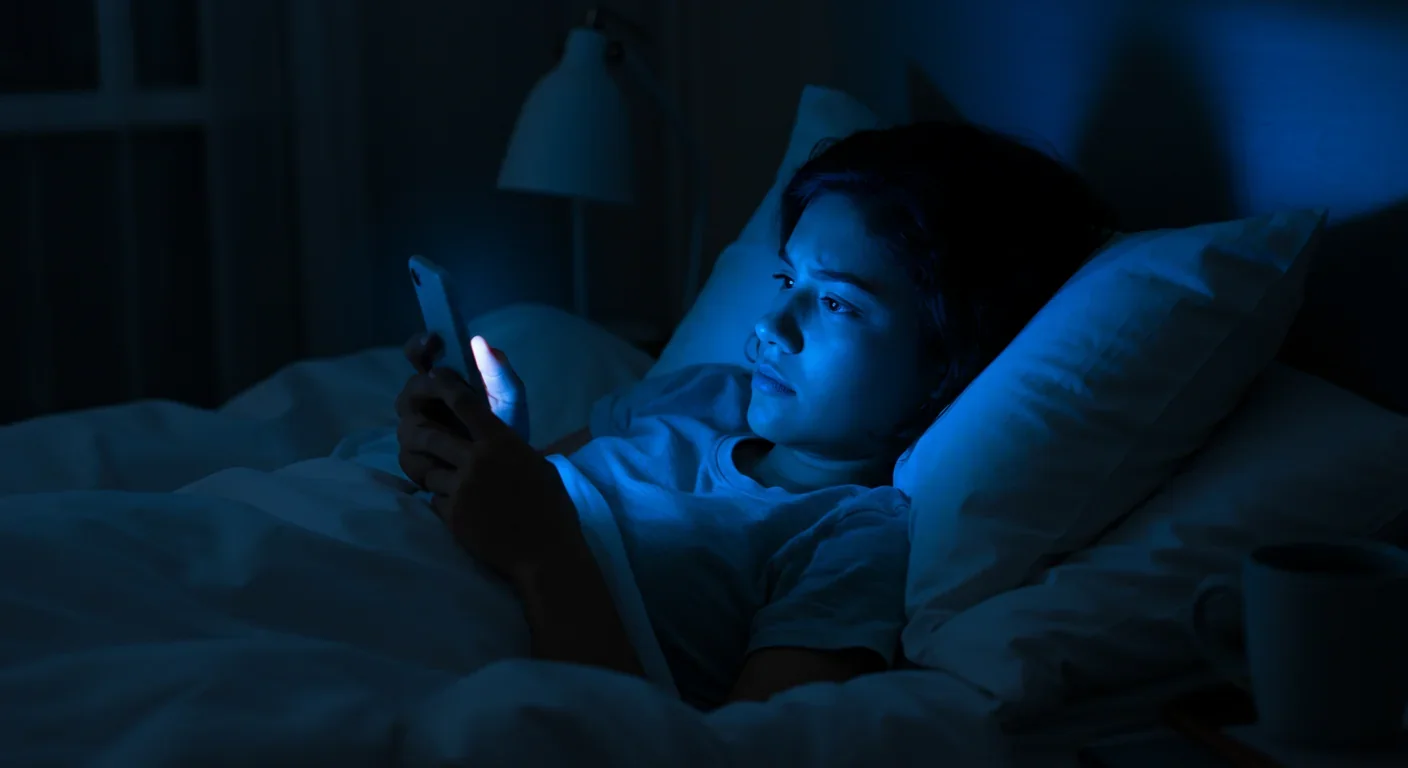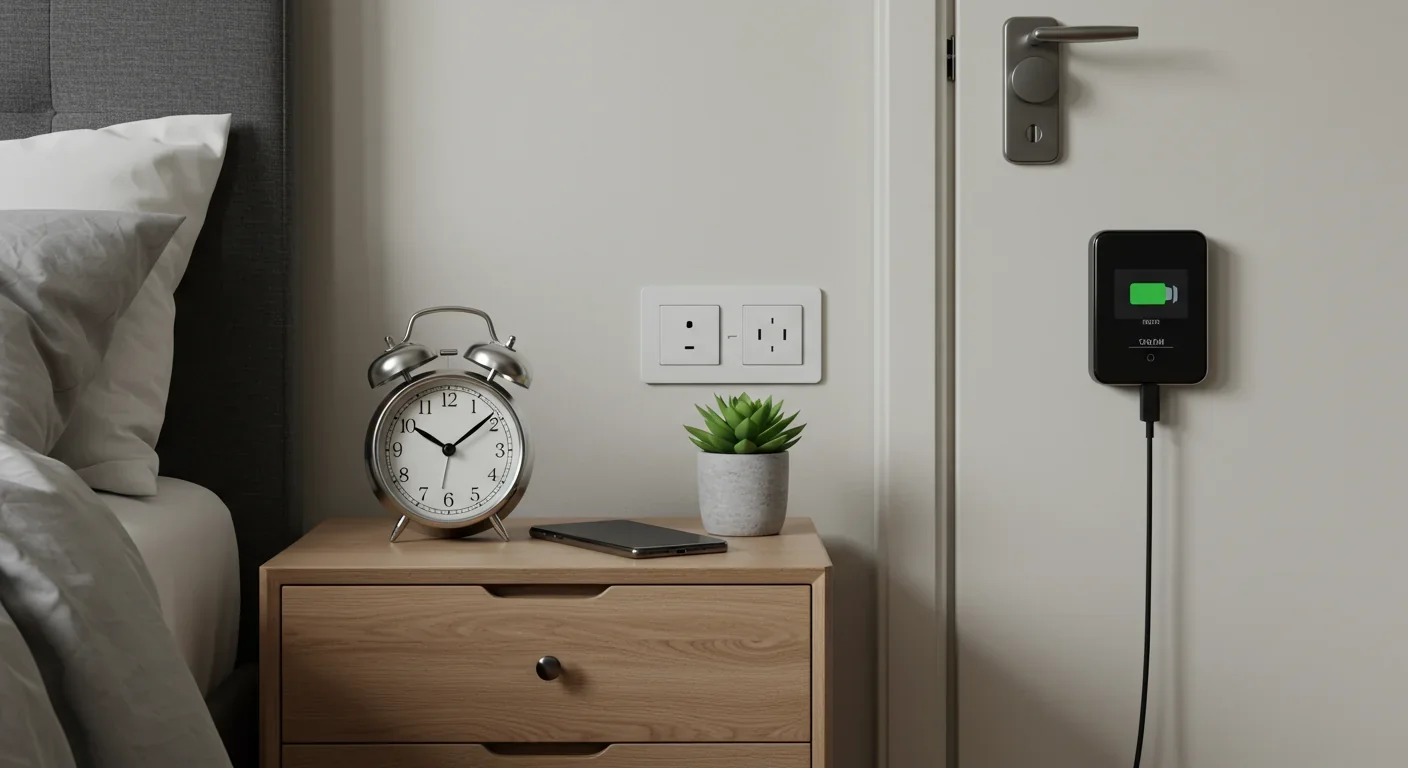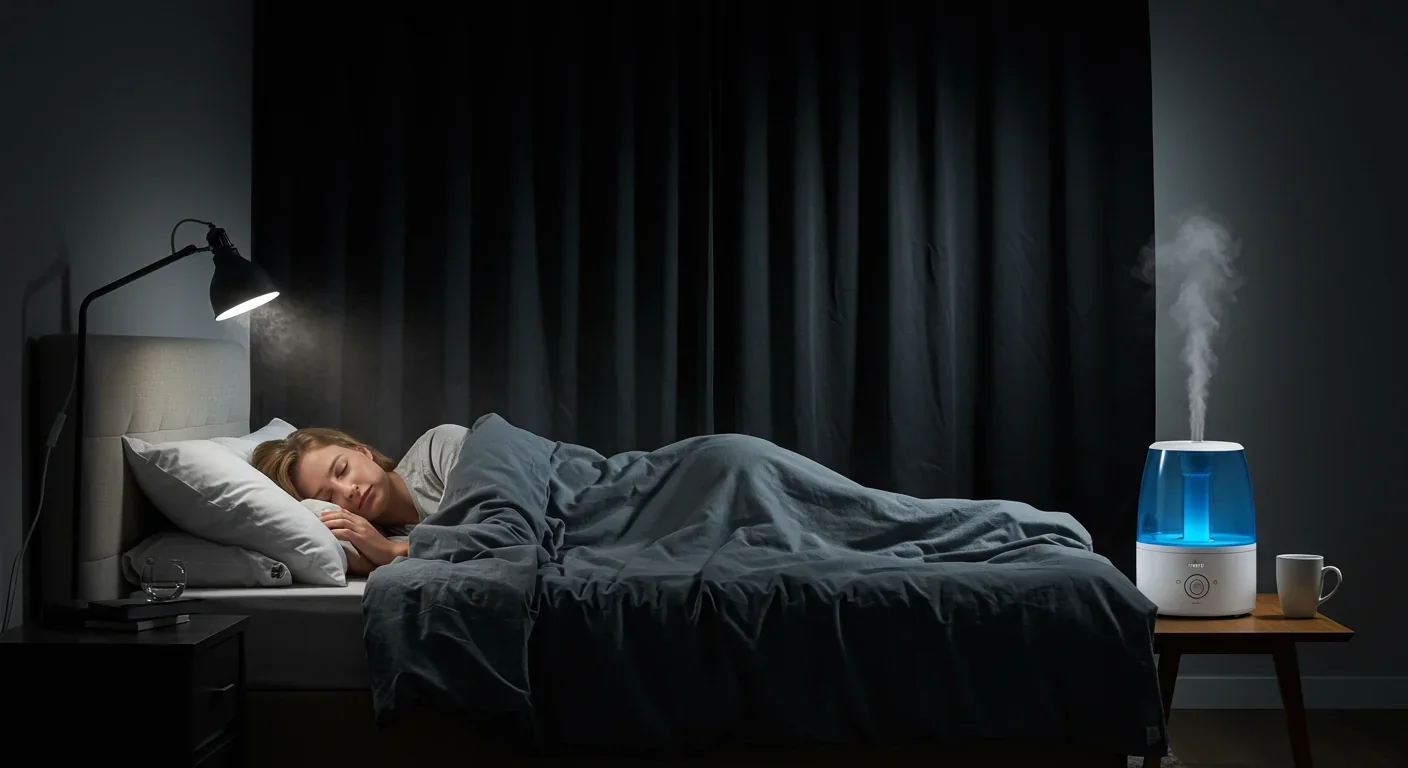Epigenetic Clocks Predict Disease 30 Years Early

TL;DR: The 24/7 digital age is systematically destroying sleep quality through screen exposure, work stress, and environmental factors. Research shows 15-20% higher circadian disruption from high screen time, with costs exceeding $680 billion globally. Solutions include strict digital boundaries, environment optimization, and emerging AI-powered sleep technologies.

By 2030, experts predict that sleep deprivation will cost the global economy over $680 billion annually. But the price we're paying goes far beyond money. Right now, as you read this, millions of people are locked in a silent battle with their own biology, fighting a 24/7 digital culture that's fundamentally incompatible with how our brains evolved to rest. The consequences show up everywhere: declining productivity, deteriorating mental health, and a healthcare crisis that's only getting worse. Yet most of us keep scrolling until midnight, convinced we can somehow cheat our circadian rhythms. We can't.
Sleep isn't just downtime. It's a precisely orchestrated biological process that unfolds in distinct stages throughout the night. During the first few hours, you sink into deep sleep for about 70 to 90 minutes, a phase that diminishes as you age but remains essential for physical restoration. Then comes REM sleep, where your brain consolidates memories, processes emotions, and strengthens immune function by producing cytokines that defend against infection.
But here's what makes this process so fragile: it all depends on your circadian rhythm, an internal 24-hour clock governed by light exposure. When natural light hits your eyes in the morning, it signals your brain to suppress melatonin and wake up. As darkness falls, melatonin production ramps up, preparing you for sleep. This elegant system worked perfectly for thousands of years. Then we invented the smartphone.
Modern screens emit blue light that mimics daylight and suppresses melatonin production, effectively telling your brain it's still noon when it's actually 11 PM. Research shows that high screen time of more than three hours increases circadian rhythm disruption by 15 to 20 percent compared to less than one hour. Among adolescents, screen use before bed delays sleep onset by about 23 minutes. That might not sound like much, but multiply it by 365 nights, and you've lost 140 hours of sleep per year just from pre-bedtime scrolling.
The damage extends beyond delayed sleep onset. REM deprivation can occur even when total hours of rest seem adequate, because screen exposure fragments the architecture of your sleep cycles. You might be in bed for eight hours but only getting five hours of truly restorative sleep. Your brain can't complete the memory consolidation it needs. Your immune system can't manufacture enough protective cytokines. You wake up feeling like you never really slept at all.
The 24/7 digital culture doesn't just disrupt sleep through screens. It's fundamentally changed our relationship with work itself. Remote work was supposed to give us flexibility and freedom, but for many people it's obliterated the boundary between professional and personal time. When your bedroom is also your office, your brain never gets a clear signal that the workday has ended.
Consider this: approximately 60 percent of Canadians experience workplace burnout. That's not because Canadians are uniquely susceptible to stress; it's because modern work culture expects constant availability. Emails arrive at 9 PM. Slack messages ping during dinner. The pressure to respond immediately creates a chronic state of vigilance that keeps cortisol levels elevated when they should be declining.
Cortisol interacts with circadian biology in complex ways, but the basic mechanism is straightforward: chronic stress keeps your body in fight-or-flight mode when it should be transitioning to rest-and-digest. High cortisol in the evening suppresses melatonin production, delays sleep onset, and reduces the proportion of time spent in deep sleep stages. When you finally do fall asleep, elevated cortisol can cause frequent awakenings throughout the night.
The irony is brutal. Poor sleep kills work performance, creating a vicious cycle where exhausted workers make more mistakes, take longer to complete tasks, and struggle with decision-making. One analysis found that lack of sleep costs the UK economy an estimated £40 billion annually in lost productivity. Organizations respond by demanding more availability, more meetings, more "urgency." Employees respond by sleeping less. Everyone loses.
Among shift workers, the situation reaches crisis levels. Rotating shift schedules disrupt circadian rhythms so severely that they're associated with dramatically higher rates of burnout, cardiovascular disease, and mental health disorders. Nurses, emergency responders, and factory workers bear the heaviest burden. They're not just tired; they're fighting against millions of years of evolutionary programming that says humans should sleep when it's dark.
Even if you manage to put down your phone and leave work stress at the door, your environment might be sabotaging your sleep in ways you don't notice. Urban noise pollution has become so pervasive that we've normalized the constant hum of traffic, sirens, and construction. But your sleeping brain hasn't adapted.
Research shows that noise levels above 50 decibels increase autonomic nervous system activity during sleep, reducing the time you spend in deep sleep stages. A 2025 study from the University of Auckland found that urban noise and artificial light disrupted sleep patterns within just one night, demonstrating how quickly environmental stressors can derail circadian regulation. Yet most cities have weak enforcement of noise ordinances, and the problem keeps getting worse.
Artificial light compounds the issue. It's not just your phone screen; it's streetlights flooding through your bedroom window, LED billboards glowing all night, and the ambient light pollution that makes urban skies never truly dark. Aligning daily rhythms with natural light supports overall well-being, but millions of people live in environments where natural darkness no longer exists.
Temperature matters too. The optimal bedroom temperature for sleep is between 16 and 20 degrees Celsius. Too warm, and your body can't initiate the slight core temperature drop that signals it's time to sleep. Too cold, and you'll wake up frequently. Yet many people sleep in rooms that are poorly ventilated, overheated, or subject to dramatic temperature fluctuations throughout the night.

The health consequences of chronic sleep deprivation read like a horror story. Sleep disruption is strongly correlated with cardiometabolic diseases including obesity, type 2 diabetes, hypertension, and cardiovascular disease. People who consistently sleep less than six hours per night have a significantly higher risk of heart attack and stroke.
The brain suffers particularly severe damage. Sleep fragmentation from insomnia impairs glymphatic clearance, the process by which your brain flushes out toxic proteins like amyloid beta during deep sleep. When this clearance system can't function properly, those proteins accumulate, dramatically increasing the risk of Alzheimer's disease and other forms of dementia. Your brain literally drowns in its own metabolic waste when you don't sleep enough.
Mental health deteriorates rapidly under chronic sleep deprivation. Combined cognitive dysfunction and sleep problems create a bidirectional relationship where poor sleep worsens depression and anxiety, which in turn make sleep even more difficult. A recent meta-analysis found that depression outcomes from sleep interventions showed extreme heterogeneity with I-squared values of 99 percent, suggesting that the relationship between sleep and mental health is incredibly complex and individual.
Immune function collapses without adequate REM sleep. Chronic REM deprivation reduces immune function by decreasing cytokine production, leaving you vulnerable to infections, slower wound healing, and reduced vaccine effectiveness. During the COVID-19 pandemic, researchers found that people with poor sleep had significantly lower antibody responses to vaccines.
Perhaps most disturbing, sleep loss is intergenerational. Parents who are chronically exhausted struggle to maintain consistent routines for their children. High screen time in school-aged children disrupts sleep patterns, creating a generation growing up with dysfunctional circadian systems. The long-term impact of chronic screen exposure on developing brains remains unknown, but early indicators are alarming.
The good news is that sleep can be restored, often more quickly than you'd expect. The key is addressing the root causes systematically rather than reaching for quick fixes like sleeping pills, which often reduce sleep quality even as they increase total sleep time.
Start with digital hygiene. Limiting screen exposure two hours before bed allows melatonin production to return to normal levels. If you absolutely must use screens in the evening, enable blue light filters and reduce brightness to minimum levels. Better yet, establish a charging station outside your bedroom and make the last hour before sleep completely screen-free.
One experiment that demonstrates the power of this approach: trying not to use a phone in the morning or before bed led to noticeable improvements in sleep quality and morning alertness within just a few days. The habit is difficult to establish, particularly when you're used to using your phone as an alarm clock, but the payoff is substantial.
For work-related stress, establish hard boundaries. Approximately 60 percent of Canadians experience burnout partly because they never disconnect from work. Set a specific time when work communications stop, even if that means occasionally missing an "urgent" email. Communicate these boundaries clearly to colleagues and supervisors. Most organizations will respect them once you demonstrate that better-rested employees are more productive employees.
Environment optimization makes a massive difference. Invest in blackout curtains or a sleep mask to eliminate light pollution. Use white noise machines or earplugs to minimize disruptive sounds. Keep your bedroom temperature between 16 and 20 degrees Celsius. Reserve your bedroom exclusively for sleep and intimacy; when your brain associates the room with work or entertainment, it struggles to transition into sleep mode.
Limiting alcohol and caffeine is crucial since both substances interfere with later sleep stages where REM occurs. Caffeine has a half-life of about five to six hours, meaning that coffee at 4 PM still has 25 percent of its original caffeine content at 10 PM. Alcohol might help you fall asleep initially, but it suppresses REM sleep throughout the night, leaving you feeling unrefreshed despite adequate sleep duration.
Consider a digital detox challenge to reset your relationship with technology. Start with a five-day commitment to no screens two hours before bed, no phone checking first thing in the morning, and designated screen-free times during the day. Most people report that the first two days are difficult, but by day three or four they notice improved sleep quality, better focus, and reduced anxiety.
For shift workers, the interventions need to be more targeted. Light therapy improved sleep efficiency in multiple studies with effect sizes around 0.35, and reduced sleepiness with effect sizes around 0.30. Bright light exposure during night shifts and light avoidance after shifts can help realign circadian rhythms. Organizations that implement programs focused on sleep improvement for shift workers see measurable benefits in reduced burnout and improved performance, though many existing interventions lack rigorous experimental design.

Here's where things get interesting: the same technology that's disrupting our sleep might also provide solutions. Wearable devices like smartwatches and fitness trackers now include increasingly sophisticated sleep monitoring capabilities. They track sleep stages, heart rate variability, blood oxygen levels, and movement patterns throughout the night.
The accuracy remains imperfect. Wearable devices often overestimate sleep duration compared with polysomnography, the gold-standard sleep measurement technology. Proprietary algorithms used by manufacturers aren't transparent, making it difficult to assess how valid the data really is. Yet even with these limitations, wearables provide useful feedback that helps people recognize patterns and track the impact of behavioral changes.
The real promise lies in AI-powered sleep coaching. Digital sleep interventions produced a large improvement in sleep quality, with a pooled effect size of negative 1.25, indicating substantial benefits. These programs analyze your sleep data, identify specific problems, and provide personalized recommendations that evolve based on your progress. They're not perfect, but they're far more accessible than traditional sleep clinics that often have months-long waitlists.
Emerging technologies target specific sleep disorders. AI-enhanced smartwatches can now estimate apnea-hypopnea index, potentially reducing the burden on sleep laboratories for initial screening of obstructive sleep apnea. The global prevalence of sleep apnea increased from 0.14 percent in 2003 to 4.59 percent in 2020, creating massive demand for diagnostic services that traditional sleep labs can't meet. Wearable-based monitoring offers a scalable solution, though clinical validation remains ongoing.
Individual interventions can only go so far when the problem is systemic. Some countries are beginning to recognize sleep as a public health priority that requires policy-level solutions.
France famously implemented a "right to disconnect" law that prohibits companies from expecting employees to respond to work communications outside designated hours. Early data suggests it reduces burnout, though enforcement remains inconsistent. Similar legislation is being considered in other European countries and several US states.
Noise pollution policy is falling silent in many jurisdictions despite growing evidence of health impacts. Cities that do enforce noise ordinances and invest in sound barriers around highways see measurable improvements in resident sleep quality. Urban planning that prioritizes green spaces, restricts late-night construction, and designs residential areas away from major traffic arteries can significantly reduce environmental sleep disruption.
Some forward-thinking companies are redesigning shift schedules to minimize circadian disruption. Rather than rotating workers through day, evening, and night shifts in rapid succession, they're implementing longer rotation periods that allow circadian systems to partially adapt. They're providing bright light therapy equipment for night shift workers and quiet, dark spaces for daytime sleep. The comparative effectiveness of shift schedule redesign versus light therapy varies across studies, but organizations that implement multiple interventions simultaneously see the best results.
Within the next decade, sleep technology will become far more sophisticated. Researchers are developing non-invasive brain stimulation devices that can enhance slow-wave sleep, the deepest and most restorative phase. Smart home systems will automatically adjust lighting, temperature, and sound based on your sleep stage. Genetic testing might reveal individual variations in circadian genes, enabling truly personalized sleep optimization strategies.
But technology alone won't solve a problem that's fundamentally cultural. The 24/7 digital age demands that we rethink basic assumptions about productivity, availability, and what it means to be "always on." Some organizations are beginning to recognize that well-rested employees dramatically outperform exhausted ones, even if the well-rested employees work fewer total hours. They're measuring output and impact rather than time spent at a desk or online.
The shift will be gradual, and it will require collective action. Parents need to model healthy digital boundaries for their children. Employers need to stop rewarding the employee who responds to emails at midnight. Urban planners need to prioritize sleep-friendly design in residential areas. Healthcare systems need to treat sleep disorders with the same urgency as other chronic conditions.
Your sleep is not a luxury or a nice-to-have. It's a biological necessity as fundamental as food and water. Every night of poor sleep compounds the damage, and every attempt to "catch up" on weekends falls short of what your body actually needs. The 24/7 digital culture will continue to demand your attention, but you don't have to surrender to it.
Start tonight. Put your phone in another room. Set your bedroom temperature to 18 degrees. Commit to eight hours in bed, even if you think you can function on less. Your brain, your health, and your future self will thank you.
The revolution won't be televised. It will be well-rested.

Recent breakthroughs in fusion technology—including 351,000-gauss magnetic fields, AI-driven plasma diagnostics, and net energy gain at the National Ignition Facility—are transforming fusion propulsion from science fiction to engineering frontier. Scientists now have a realistic pathway to accelerate spacecraft to 10% of light speed, enabling a 43-year journey to Alpha Centauri. While challenges remain in miniaturization, neutron management, and sustained operation, the physics barriers have ...

Epigenetic clocks measure DNA methylation patterns to calculate biological age, which predicts disease risk up to 30 years before symptoms appear. Landmark studies show that accelerated epigenetic aging forecasts cardiovascular disease, diabetes, and neurodegeneration with remarkable accuracy. Lifestyle interventions—Mediterranean diet, structured exercise, quality sleep, stress management—can measurably reverse biological aging, reducing epigenetic age by 1-2 years within months. Commercial ...

Data centers consumed 415 terawatt-hours of electricity in 2024 and will nearly double that by 2030, driven by AI's insatiable energy appetite. Despite tech giants' renewable pledges, actual emissions are up to 662% higher than reported due to accounting loopholes. A digital pollution tax—similar to Europe's carbon border tariff—could finally force the industry to invest in efficiency technologies like liquid cooling, waste heat recovery, and time-matched renewable power, transforming volunta...

Humans are hardwired to see invisible agents—gods, ghosts, conspiracies—thanks to the Hyperactive Agency Detection Device (HADD), an evolutionary survival mechanism that favored false alarms over fatal misses. This cognitive bias, rooted in brain regions like the temporoparietal junction and medial prefrontal cortex, generates religious beliefs, animistic worldviews, and conspiracy theories across all cultures. Understanding HADD doesn't eliminate belief, but it helps us recognize when our pa...

The bombardier beetle has perfected a chemical defense system that human engineers are still trying to replicate: a two-chamber micro-combustion engine that mixes hydroquinone and hydrogen peroxide to create explosive 100°C sprays at up to 500 pulses per second, aimed with 270-degree precision. This tiny insect's biochemical marvel is inspiring revolutionary technologies in aerospace propulsion, pharmaceutical delivery, and fire suppression. By 2030, beetle-inspired systems could position sat...

The U.S. faces a catastrophic care worker shortage driven by poverty-level wages, overwhelming burnout, and systemic undervaluation. With 99% of nursing homes hiring and 9.7 million openings projected by 2034, the crisis threatens patient safety, family stability, and economic productivity. Evidence-based solutions—wage reforms, streamlined training, technology integration, and policy enforcement—exist and work, but require sustained political will and cultural recognition that caregiving is ...

Every major AI model was trained on copyrighted text scraped without permission, triggering billion-dollar lawsuits and forcing a reckoning between innovation and creator rights. The future depends on finding balance between transformative AI development and fair compensation for the people whose work fuels it.